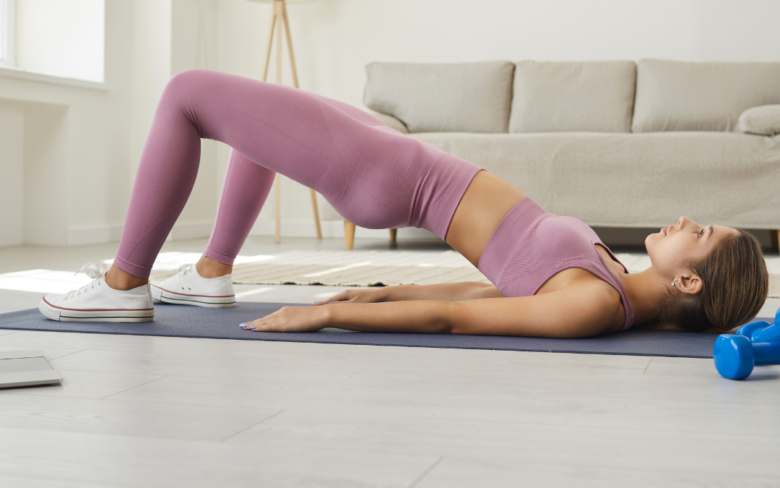Have you ever considered the muscles that work to support your bowels, uterus, and bladder? The pelvic floor is a living structure that is often ignored in the general anatomy of the human body. The pelvis engages in a great deal of activities ranging from achieving continence to increasing sexual pleasure. Unfortunately, many are still ignorant of the necessity to maintain this area.
As contemporary living gets more hectic, more stressful, and even faster, pelvic floor health tends to slip down the priority list. Appreciating its relevance together with knowledge on how to look after it can enhance your life. If you are looking above the symptoms to just strengthen this essential muscle group, there are ways by which you can improve your pelvic floor health and its functionality.
Let’s touch upon what the pelvic floor comprises, how it matters, and how you can take charge of your health right now!
What Does the Pelvic Floor Consist Of?
The pelvic floor is a combination of layers of muscles, ligaments, and tissues that are located at the base of the pelvis. It can be compared to a supportive sling for your organs as it is actively involved in supporting the bladder, uterus, and rectum. These muscles are crucial for many different activities. They control the bowel and urinary functions as well as take part in sexual function. In addition, more active pelvic floor muscles during intimacy enhance the feelings.
The pelvic floor issues are pertinent to everyone, both males and females, but their relevance is overlooked until complications develop. Childbirth, aging, or simply sitting for long periods may affect that region. One can take measures to strengthen the pelvic floor and be inactive for her entire life by understanding the importance of the area.
Why Is It Important to Maintain Optimal Pelvic Floor Health?
The health of the pelvic floor is key to general body health. It helps with the bladder, uterus, and rectum. The efficient performance of these muscles ensures normal control of urination and defecation. Sexual health, too, is improved with a strong pelvic floor. Most women attest that when their pelvic muscles are toned, they feel more during intimacy. For these women, a healthy pelvic floor can reduce conditions like prolapse or incontinence. Such conditions are usually incapacitating and, in most instances, fairly undermine the quality of life.
Pregnancy and childbirth put immense pressure on this area. Exercising and relaxing the pelvic muscles is said to help with labor and recovery after giving birth. Apart from that, enhancing pelvic health strengthens one’s posture and core. This aspect explains why pelvic health is not only related to reproduction. Pelvic muscles are important for the entire body, and ignoring them means neglecting the body.
Different Factors Associated with Pelvic Floor Dysfunction:
- Pelvic floor dysfunction can occur due to a variety of factors that also affect the muscular and connective tissue in that area. One common contributor is pregnancy, which places significant stress on pelvic structures, which, if unaddressed, will lead to weakening with time.
- Aging is another important factor. With aging, tissue elasticity gets reduced, resulting in greater chances of pelvic floor dysfunctions.
- Chronic conditions such as obesity or diabetes further add another layer of stress and inflammation. Such health problems also predispose to further weakness of muscle strength.
- Inadequate techniques in carrying out repetitive motions and heavy lifting can also lead to damage to the stabilizing framework of the pelvis. Such a type of physical stress is potentially radicular and is likely to result in pain or discomfort.
- Equally important are the emotional factors: stress and anxiety can lead to the pelvic muscles being drawn tight, worsening already present issues. These factors should be appreciated while formulating a plan to tackle the symptoms.
How Do Exercises for Strengthening the Pelvic Floor?
It is important to develop the pelvic floor for general well-being. Kegel exercises are perennial favorites in this area. These involve the flexing of the pelvic musculature in a way of stopping the flow of urine. First, feel for the muscles of the pelvis. Next, attempt to ‘squeeze’ them and, after five seconds, release the contraction. In due course, try to make the time duration for which the contraction is held longer.
Another powerful procedure is the bridge lift. Start this exercise by lying supine with knees bent so the feet rest firmly on the floor. While keeping your abs tight, raise your hips as high as possible. To strengthen them, squats can also be beneficial. With your feet planted at shoulder-width apart, support your body weight on your heels as you squat back as if to sit on a chair. Ample practice of these exercises should create a noticeable difference in the long run.
Effective Methods to Enhance Pelvic Health:
Ineffective lifestyle choices can often be addressed by making slight alterations, such as focusing on the pelvic floor. The first step is consistency in engaging in physical activity. Following a workout plan that includes walking, swimming, or doing yoga helps in building up the abdomen and pelvic floor muscles. It is also necessary to change your diet. Having a diet high in fiber ensures smoother digestion, which helps protect the pelvic floor from damage caused by excessive pressure from straining during constipation. Replace these with more organic options such as seasonal vegetables, seasonal fruits, and whole grains.
Hydration is equally important too. Keeping your body hydrated supports proper bowel movements and also enhances muscle efficiency. At least eight glasses a day is the bare minimum. Relaxation techniques like deep breaths or meditation are helpful too. Stress contributes to pelvic tension, so it is important to find the most relaxing exercises for yourself. Try not to do any heavy lifting in any case, as it may put excess strain on your pelvis. Gradual tweaks yield significant results.
Alternative Treatments for Pelvic Floor Issues:
- The best option for pelvic floor exercise can sometimes be found in exploring the less visited parts of the world. Many people do not wish to go through the conventional approach, and there are many who swear by the holistic methods of doing things that have always worked for them.
- One of the options is acupuncture. It focuses on specific points of a person’s body in order to reduce tension as well as heal them. Some patients, after completing a few sessions, report that their pelvic area has improved.
- Another route that can be explored for pelvic floor issues is biofeedback therapy. This treatment encourages people to gain more awareness regarding their bodily processes and perform specific guided exercises to better control muscles.
- Likewise, herbal medicine too has its advantages. Many of the herbs are known to possess anti-inflammatory qualities, aiding discomfort brought about due to pelvic floor dysfunction.
- Yoga is increasingly being embraced as an effective solution to construct the pelvic region while still relaxing on the body. Those who may have had an issue in this region are likely to benefit from poses focused on hip-opening stretches.
Because everybody’s path is different, these methods might also provide relief and a sense of power for some people.
Conclusion:
Understanding anatomical areas such as the pelvic floor and their significance is vital to focusing on self-care. Such an area that is generally ignored creates a boundary in the life of a person, affecting the quality of life in aspects such as continence or sex. Working on understanding elevation via the means of such muscles can create a diverse change. Cutting out the negative aspects of a lifestyle will also be a benefit, as it not only helps with the physical side but the mental image one has will also be enhanced.
Those who had trouble focusing on the positives will now have more areas to explore due to the nature of the treatments. Focusing on the pelvic region will only deepen the relationship one has within themselves and nurture self-love. This being said, focusing on such a side to self-care will allow the individual to benefit greatly, enabling them to boost engagement not only in activities but also in their interpersonal skills.
FAQs:
1. What are common symptoms of pelvic floor dysfunction?
Some of the frequent ones are weakness in bladder control, difficulty emptying the bowels, and pain during intermingling or intercourse.
2. Are pelvic floor concerns confined to women only?
Unequivocally, men can also have pelvic floor problems owing to things such as prostate surgery or chronic coughing that puts strain on the lower abdominals.
3. How long does one need to undergo pelvic floor exercises to claim effectiveness?
Many people can strengthen the pelvic floor and observe improvements in symptoms after a few weeks of working on the exercises if they perform them systematically and regularly.
4. What kind of diet would be beneficial in maintaining a good pelvic floor in women?
Fiber intake in meals would aid in preventing constipation and in alleviating pressure on the pelvic aspects; in addition to that, water intake is important as well!
5. At what stage should I get in touch with a professional regarding my condition?
If you are feeling uncomfortable on a prolonged basis or are having problems doing the activities that you ordinarily do, such as having bowel movements or having penetrative intercourse, then you ought to reach out to a doctor in this field.




